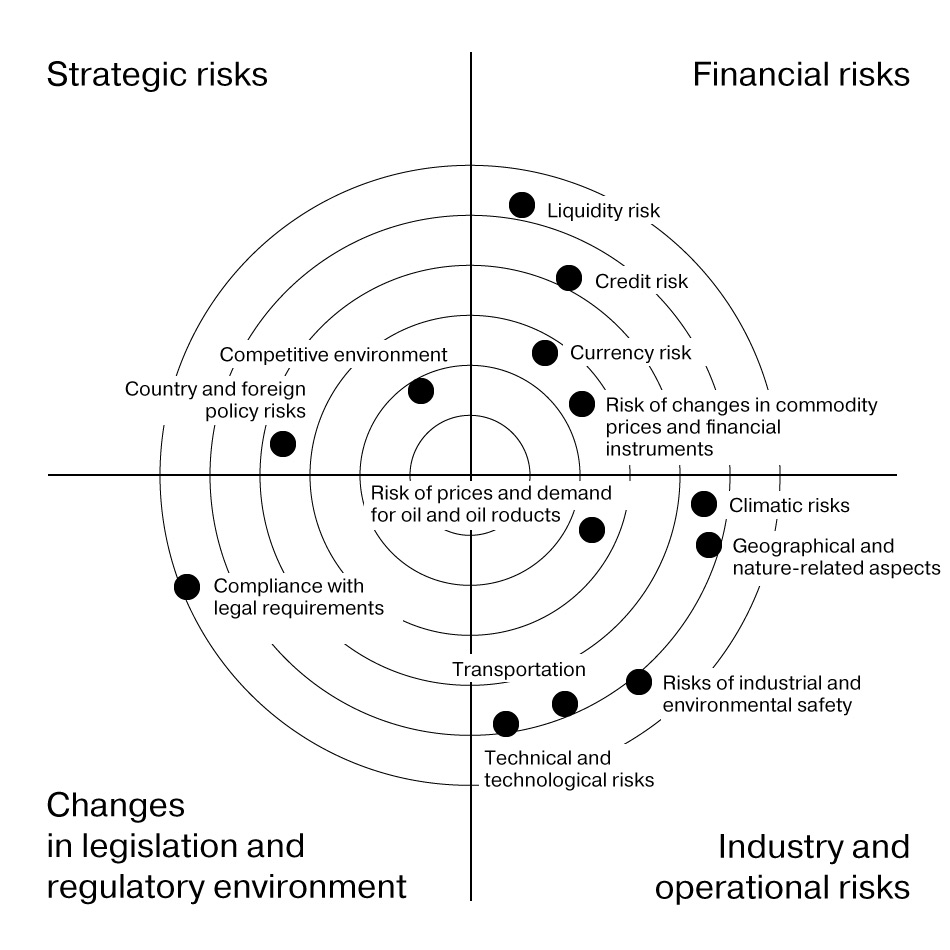The Company has a stable management platform for the implementation of the Strategy and makes adjustments to its plans as and when required. The Policy of vertical integration and diversification allows for significant reduction (elimination) of strategic risks, including critical risks, through redistribution of resources and commodity flows.
The Company conducts a comprehensive analysis of risks inherent in the industry environment in order to maximize the use of existing opportunities and increase the potential of competitive advantages, taking into account the expansion of access to the resource base, increase in the profitability of current operations, diversification of assets and development of the business infrastructure.
The Company adheres to the opinion that the situation in the region of principal activities and location of key assets of the Group as a whole is stable. During 2018, the credit ratings of the Russian Federation assigned by such international agencies as Standard&Poors, Moody’s, and Fitch were at BBB-, Ba1, and BBB-, respectively. These ratings are used by investors to assess the risks associated with investing in assets in the Russian Federation. The Company takes into account existing sanctions in its activities and monitors them to minimize negative effects and consequences.

